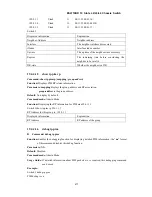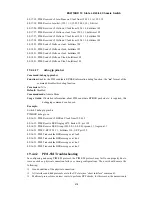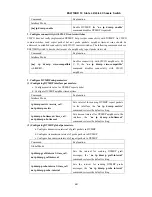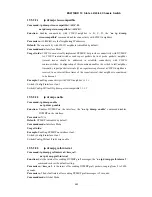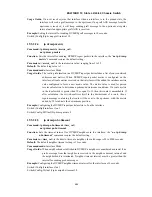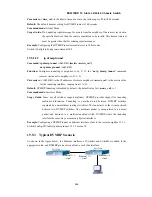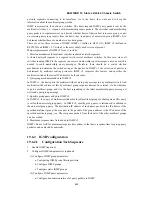
486
E
ES4710BD 10 Slots L2/L3/L4 Chassis Switch
Parameters:
< time_val>
is the time to timeout a route, the valid range is 20 to 1400 seconds..
Default:
The default timeout setting for DVMRP routes is 140 seconds.
Command mode:
Global Mode
Usage Guide:
If no updating report message for a route from the neighbor of the route is received in
the specified interval, then the route is considered to be invalid. This timeout interval
must be greater than that for sending report messages.
Example:
Configuring the DVMRP route timeout interval to 100 seconds..
Switch (Config)#ip dvmrp route-timeout 100
19.5.2.2.9 ip dvmrp tunnel
Command:
ip dvmrp tunnel
<A.B.C.D>
[metric
<metric_val>
]
no ip dvmrp tunnel
<A.B.C.D>
Function:
Configures tunneling to neighbor A, B, C, D; the “
no ip dvmrp tunnel
” command
removes the tunnel to neighbor A, B, C, D.
Parameters:
< A.B.C.D>
is the IP addresses of remote neighbors;
<metric_val>
is the metric value
for the tunneling interface, ranging from 1 to 32.
Default:
DVMRP tunneling is disabled by default, the default value for
<metric_val>
is 1.
Command mode:
Interface Mode
Usage Guide:
Since not all switches support multicast, DVMRP provides support for tunneling
multicast information. Tunneling is a method used between DVMRP switches
separated by non-multicast routing switch(es). The tunnel acts as the virtual network
between two DVMRP switches. The multicast packet is encapsulated in a unicast
packet and destined to a multicast-enabled switch. DVMRP treats the tunneling
interface the same way as common physical interfaces.
Example:
Configuring a DVMRP tunnel on Ethernet interface vlan1 to the remote neighbor 1.1.1.1.
Switch(Config-If-Vlan1)#ip dvmrp tunnel 1.1.1.1 metric 10
19.5.3 Typical DVMRP Scenario
As shown in the figure below, the Ethernet interfaces of SwitchA and SwitchB are added to the
appropriate vlan, and DVMRP protocol is enabled on each vlan interface.
SWITCHA
SWITCHB
Et her net 1/ 1
vl an1
Et her net 1/ 1
vl an1
Et her net 1/ 2
vl an2






